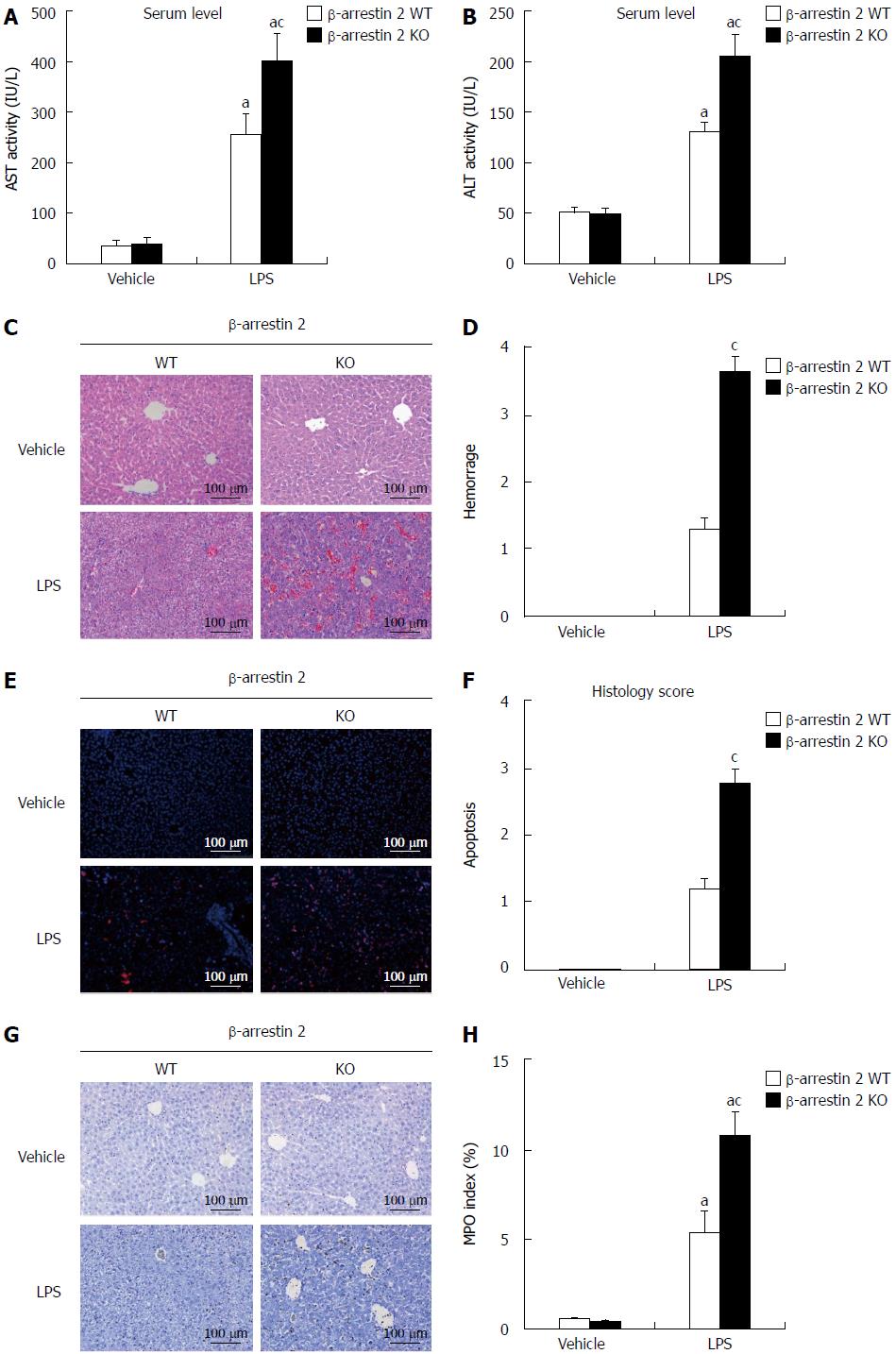Copyright
©The Author(s) 2018.
World J Gastroenterol. Jan 14, 2018; 24(2): 216-225
Published online Jan 14, 2018. doi: 10.3748/wjg.v24.i2.216
Published online Jan 14, 2018. doi: 10.3748/wjg.v24.i2.216
Figure 1 Evaluation of lipopolysaccharide-induced liver injury in vivo .
A and B: Serum levels of ALT and AST were detected using ELISA kits in β-arrestin 2 WT and β-arrestin 2 KO mice treated with LPS and vehicle; C: HE staining of liver tissue (magnification, × 200); D: Histology score of hemorrhage in β-arrestin 2 WT and KO mice treated with LPS and vehicle; E: TUNEL staining of liver tissue (magnification, × 200); F: Histology score of apoptosis in β-arrestin 2 WT and KO mice treated with LPS and vehicle; G: Immunohistochemical staining for MPO expression in liver tissues from β-arrestin 2 WT and β-arrestin 2 KO mice treated with LPS and vehicle, (magnification, × 200); H: MPO index in β-arrestin 2 WT and β-arrestin 2 KO mice treated with LPS and vehicle. aP < 0.05 vs vehicle control group; cP < 0.05 vs β-arrestin 2 WT mice. LPS: Lipopolysaccharide.
- Citation: Jiang MP, Xu C, Guo YW, Luo QJ, Li L, Liu HL, Jiang J, Chen HX, Wei XQ. β-arrestin 2 attenuates lipopolysaccharide-induced liver injury via inhibition of TLR4/NF-κB signaling pathway-mediated inflammation in mice. World J Gastroenterol 2018; 24(2): 216-225
- URL: https://www.wjgnet.com/1007-9327/full/v24/i2/216.htm
- DOI: https://dx.doi.org/10.3748/wjg.v24.i2.216









